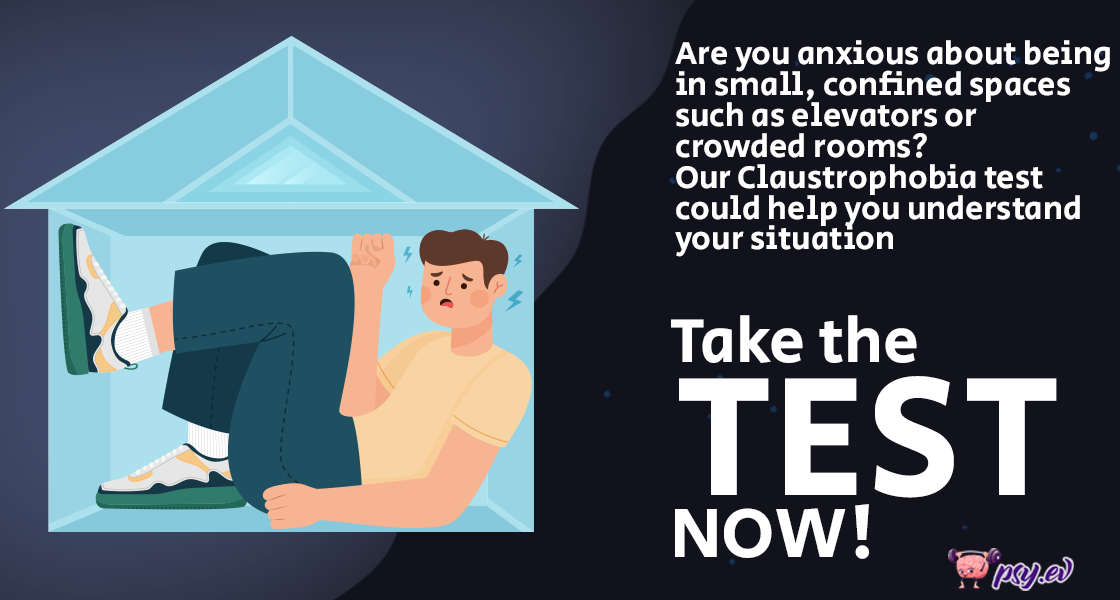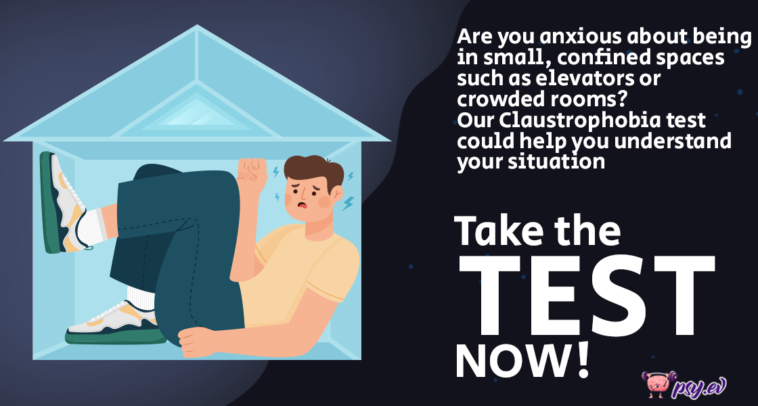Everybody experiences claustrophobia differently. Some people may suffer mild anxiety, while others may feel paralyzed by terror and endure panic attacks. When confronted with congested or constrained places, such as a lift, claustrophobic individuals may experience anxiety or panic.
This claustrophobia test is formed based on clinically tested research. Once you receive the result, visit a professional for confirmation.
Signs and Causes of Claustrophobia
The signs of claustrophobia are both psychological and emotional such as extreme anxiety, fear of not being in control, breathing difficulties, sweating, heart flutters, and dizziness.
Furthermore, behavioral signs can include avoiding tight spaces and scanning a room for exits.
Many times, people may link their fear to a bad experience that includes being in a confined area, being trapped there, or having a horrific incident occur there.
According to research, greater fear results from the frontal areas of the brain's inability to downregulate from hyperactivation. The brain's "fear center" is the amygdala.
When triggered, claustrophobic patients suffer from severe fear and anxiety. This may cause people to avoid events that can make them fearful, such as taking elevators or attending tightly packed bars. They may not even be able to go through certain medical procedures such as MRI or CT Scans.
Most people who suffer from claustrophobia are aware that their attitude is unreasonable. By refusing to drive, use a public washroom, ride in a lift, or any other triggers, they may start to avoid circumstances that make them feel claustrophobic.
Along with the physical and mental causes, there might also be a genetic component to claustrophobia.
Next Step
To go back to living life to the fullest, seeking claustrophobia therapy is critical. Talk to a professional therapist about treatment options if the test results show that you have claustrophobia.
Therapy methods such as cognitive behavioral therapy (CBT) are the first line of treatment for claustrophobia, where you go through false ideas and learn how to face and alter any thoughts that make you feel scared.
Another kind of treatment is exposure therapy. There are several strategies to pace exposure treatment. In the gradual exposure stage, the patient and the therapist create a "fear hierarchy," rating triggers in order of difficulty. They start with easier exposures before progressively moving on to more challenging ones.
The next stage is flooding, in which the phobic trigger is repeatedly "flooded" upon the client until the fear subsides. Flooding is intended to let the person see that their trigger is not as deadly as they had previously thought and that their discomfort is mental.
Then there is systematic desensitization. Exposure therapy is paired with relaxing techniques to make the trigger feel more bearable. The goal is for the client to start associating relaxation with fearful circumstances.
You acquire coping skills by gradually encountering terrifying stimuli while receiving therapeutic help instead of avoiding them. The brain may rebuild its fear circuits through exposure.
Claustrophobia is no fun, as you often have to avoid certain interactions or events because they occur in tight spaces. Similarly, it can sometimes be inconvenient for you and the people around you. And going through an anxious episode of claustrophobia may even result in a medical emergency.
Take the claustrophobia test to find out if you have the same symptoms, and consult a professional.


